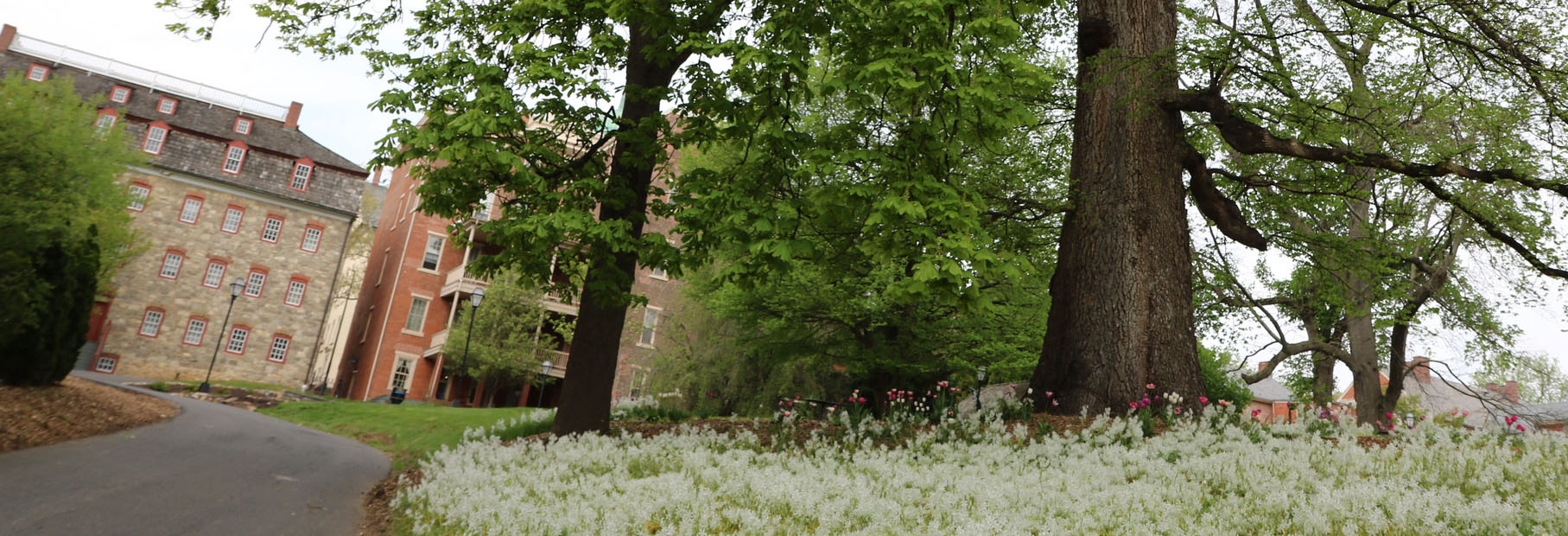Heritage Trees
Moravian University has some of the oldest and largest trees in the nation. They are known as "Heritage Trees" since they have been an important part of Moravian University's history and stood on the grounds for many generations. Learn the stories behind some of our Heritage Trees.
At one time, there stood a tree on Church Street in front of the President's House. It was thought to have stood during the revolution and was decorated and honored with a plaque. A photo of Church Street was later discovered from the 1850s, but there was no tree!
The tree unfortunately became diseased and had to be removed during President Rokke's term. Even though it wasn't standing during the revolution, it was an important tree on campus. From the wood, the Tree Table was created for the President's Lounge where it now sits in Main Hall.
The first trees planted on what is now campus was for practical, not decorative, purposes. The Moravian settlement planted its first orchard on the present location of Clewell Hall extending to Center City and the north based on early sketches in the Moravian Archives. Unfortunately, none of the apples trees planted on the orchard survived the 1800s. However, in the 1960s, Rae Griffith of the Biology Department partnered with Dr. Ritter of Penn State to study the remains of the first Moravian orchard. Twigs were found of Winter Pearman, Orange, Pippin, Sweet Bough, Maiden's Blush, and Northern Spy trees.
Comenius Hall's Copper Beeches
Perhaps the best known trees on main campus are the Copper Beeches planted by former President J. Taylor Hamilton (1918-1928) in front of Comenius Hall. President Hamilton often spoke about being ridiculed for planting the trees so far apart in front of what was then a new building. They remain an important feature in front of one of Moravian University's most recognizable buildings, located right by the flag pole.
Colonial Hall and the Archives were built in 1929 and 1930. Surprisingly, only one tree was planted during that time and remained the only tree for around two decades. In the late 1940s, Paul Cunningham, superintendent of Buildings and Grounds, sought to change that and planted four red oaks in front of the building along Main Street. When they were planted, they were about the thickness of your thumb and they've since grown to be an important feature of the building. Many members of the Moravian University community as well as prospective students and guests pass by these trees on a daily basis.
What's the toughest tree on campus? The Burr Oak at Borhek Chapel, of course! It has been struck by lightning at least three times. We don't recommend you stand under it during a storm.
In the 1970s, the planting of memorial trees was encouraged by Ray Goodson, Director of the Physical Plant. The Kentucky Coffee trees south of Colonial Hall were planted during this time along with a story published in the Lititz Record-Express (known as the "The Sunbeam") in 1892. The column stated "Lewis Huebener and Arthur Delbo left Lititz today to walk to Bethlehem to attend college." Huebener was the son of Lewis Huebener, former President (1864-1867). The Huebeners took pride in the "fine stand" of the Kentucky coffee trees (also known as mahogany) that grew in their yard. Shoots were brought from the Huebener yard to become trees on campus that still stand today.

